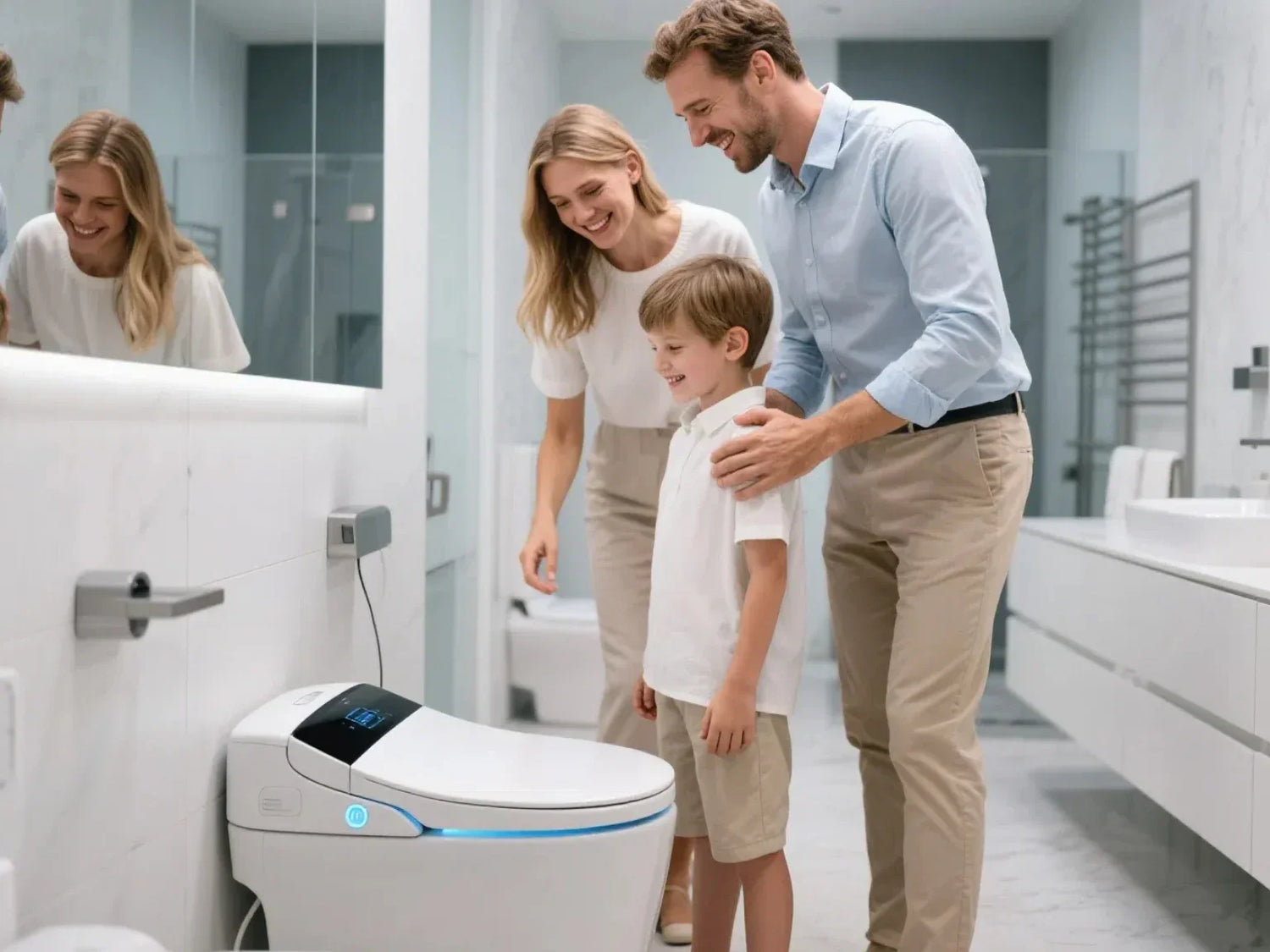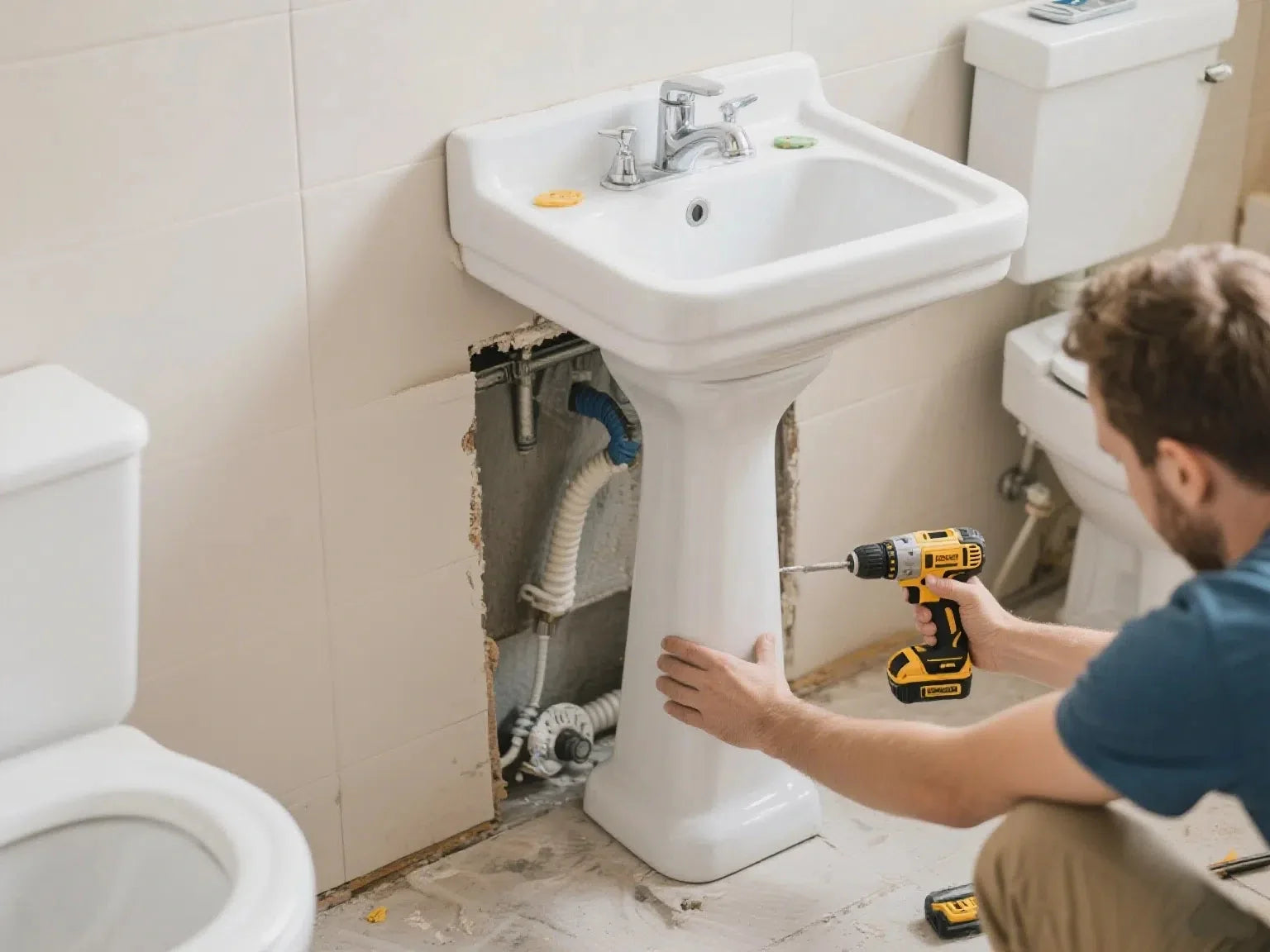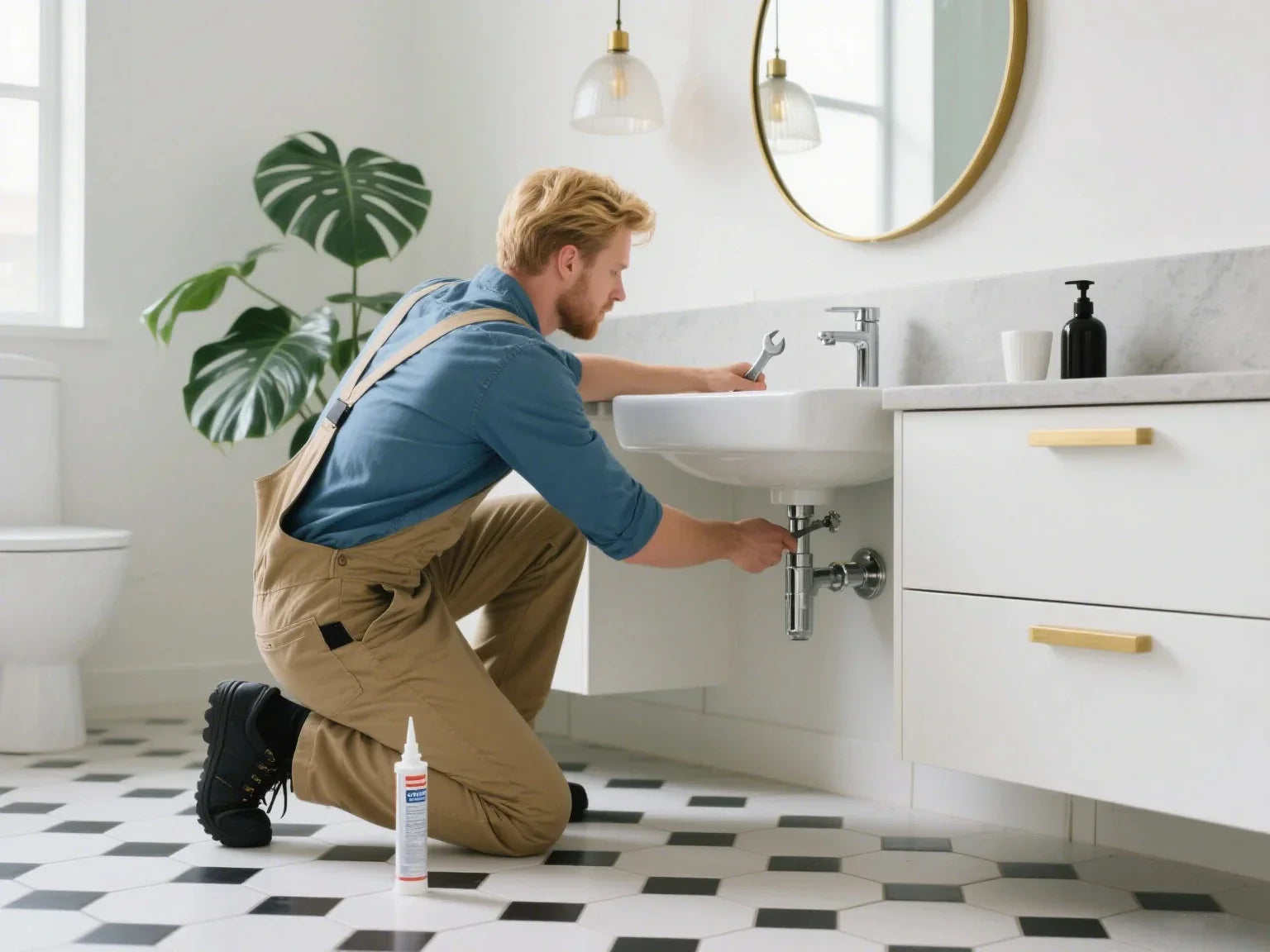Thinking about upgrading your bathroom and curious about a smart toilet with bidet? You might also wonder, how does a bidet toilet work? This guide gives you facts on bidet benefits, setup, real-world costs, and the features that matter most. Whether you are a homeowner, renter, remodeler, or care for someone with mobility issues, you'll get tips straight from recent consumer and health research. If you want a cleaner, more comfortable bathroom with less toilet paper waste, you're in the right place.
Smart Toilet With Bidet: Key Benefits and Quick Start
At-a-Glance: Key Facts
| Area | Typical Result With Smart Toilet + Bidet | Compared to Standard Toilet |
|---|---|---|
| Hygiene | Water spray rinses more effectively, less hand contact | Relies on dry toilet paper, more wiping |
| Comfort | Heated seat, customizable wash, air dry | No seat heating, no wash/dry functions |
| Efficiency | Dual flush saves water, uses less toilet paper | Single flush, higher water & TP use |
| Upfront Cost | $300–$2,000+ (see below for breakdown) | $100–$600 standard toilets |
| Installation | Needs power outlet, simple plumbing connection | No power needed, basic plumbing |
Who Should Consider a Smart Toilet With Bidet?
- Homeowners looking for long-term comfort and value
- Renters who want plug-and-play seats (no major construction)
- Remodelers who plan bigger bathroom changes and want built-in options
- People with mobility or medical needs (such as hemorrhoids, postpartum recovery, sensitive skin)
- Anyone who wants to reduce toilet paper use, clogs, and waste
Takeaways from consumer and health sources:
- Water rinsing is gentler and removes more residue, especially for sensitive skin or after childbirth.
- Self-cleaning nozzles and touch-free lids mean less hand contact, lowering germ risk.
- Smart toilets can help people spend less on toilet paper and reduce clogs over time.

Should You Choose a Bidet Seat or Integrated Smart Toilet?
Decision Tree: Quick Way to Find Your Best Fit
Answer these questions:
- Do you have a power outlet close to your toilet?
- Can you change plumbing, or do you need a "plug-on" option?
- Are you a renter or a homeowner?
- Is bathroom space tight or open?
- What's your budget for both product and installation?
Bidet Seat vs. Integrated Smart Toilet: Bidet Pros and Cons
| Bidet Seat Attachment | Integrated Smart Toilet | |
| Power | Needs nearby GFCI outlet | Needs GFCI, often higher draw |
| Install | Quick (15–45 min), DIY-friendly | More complex, may need pro |
| Cost | Lower ($300–$1,000) | Higher ($800–$2,000+) |
| Space | Fits existing toilet | New fixture, may impact layout |
| Features | Most core (wash/dry/heat), some smart | All features + bowl wash, auto flush, UV |
| Removal | Easy for renters | Not portable |
According to this comparison table, the bidet seat attachment is inexpensive, easy to install and remove, and suitable for renters. It has basic functions such as warm water rinsing, drying, and seat heating. It is very convenient to use, but it requires an outlet nearby.
The latter is easier to use and has advanced features like automatic lid opening and UV sterilization. It looks good and saves space, but it requires a pro to install it, which is both expensive and time-consuming.
Recommendation: if you have a limited budget, choose the former, which is practical and cost-effective; if you are renovating or want to pursue a more advanced hygiene experience, then the latter is definitely worth the money.
Bottom line:
- Bidet seats work well if you can't change your whole toilet or want a less upfront cost.
- Integrated smart toilets offer an all-in-one design, more power for drying and cleaning, and future-proof tech, but with more installation needs.
Smart Toilet With Bidet Features: What Really Matters?
Important Hygiene Functions
- Front and rear adjustable wash: Move nozzles or jets to wash the right area.
- Instant warm water: Heats as you use, so you won't get a cold surprise.
- Self-cleaning nozzles: Nozzles rinse themselves before and after each use, fighting germs.
Comfort and Automation
- Heated seat: Adjustable warmth for cold mornings.
- Warm air dryer: Dries after every wash: variable strength.
- Deodorizer: Fans and filters cut odors fast.
- Soft-close or auto lid: Prevents slamming and keeps hands off surfaces.
- Auto flush: Flushing happens without touch.
- Night light: Soft bowl light helps at night.
- User presets: Save settings for pressure, heat, angle.
Smart & Safety Technologies
- UV/electrolyzed cleaning: Disinfects bowl and nozzle surfaces.
- Occupancy sensors: Detect when you approach or leave.
- Voice/app control: Alexa, Google, or app adjust settings.
- Antimicrobial surfaces: Slow bacteria growth.
Efficiency
- Dual flush: Choose high or low water use per flush.
- WaterSense/low gpf: Meets modern standards: less water per flush.
- Toilet paper and water reduction: Saves household costs long-term.

Installation, Power, and Plumbing: Real-World Considerations
How to Install a Bidet Toilet: Readiness Checklist
Electrical:
- Ensure that a 120V GFCI outlet is within 4 feet of toilet.
- The circuit is capable of handling a 10–15A load.
Plumbing:
- Standard shutoff valve (1/2" or 3/8")
- T-valve or adapter for seat/bidet connection
Space:
- Measure "rough-in" (usually 12" from wall to bolt)
- Clearance for larger tankless or skirted units
Water pipe installation:
- First turn off the main water source, install a T-type valve on the stop valve.
- And then connect the toilet tank and bidet device respectively, so that it will be smooth and trouble-free to use after the connection.
Positioning the toilet:
- First measure the pit distance, usually 12 inches, and align it.
- If it's a special style, leave more space so it fits properly and is convenient to use.
Install the seat ring/entire machine:
- Place the seat ring on the mounting plate, or fix the base of the entire machine.
- Tighten it evenly so that it is stable and easy to use.
Complete the connections:
- Connect the water line, plug in the power cord, turn on the water to see if there are any leaks.
- Don't forget to try out the various functions to make sure they all work properly.
Accessibility check:
- The seat height should meet ADA standards, which is 17 to 19 inches.
- If necessary, install armrests for safer and more convenient use.
Cost & Time: DIY vs. Professional
How much does a bidet toilet cost generally? Check the following table comparing two types of installation.
| Setup Type | Estimated Cost | Time Needed |
| Bidet seat (DIY) | $300–$800 (seat) | 30–60 min |
| Integrated (Pro) | $1,000–$2,500+ (all-in) | 2–6 hours (install) |
- Bidet seats can usually be installed by a handy user.
- Integrated toilets often need a plumber and possibly an electrician.
Other Real-Life Tips
- Get GFCI (ground-fault) protection for safety.
- Freeze protection: For cold climates, seek models with heated lines or flush valves.
- Manual backup: Some models can flush without power in outage.
Tested Performance: How We Compare & What to Expect
Key Benchmarks
| Metric | Typical Range | What's Best |
| Spray Pressure | 0.5–1.5 L/min | Variable settings >1.0 |
| Drying Time | 1.5–4 min | Under 2 min is good |
| Noise Level (dBA) | 40–60 dBA | Below 50 dBA |
| Power Use (Active) | 800–1,200W | High wattage = faster dry |
| Water per Flush | 0.8–1.28 gpf | Lower = better |
What Testing Reveals
- Heated seat and auto flush are the most-cited features users won't give up.
- Full air dry can take a few minutes, so a few still pat dry with a paper square.
- Automatic hygiene cycles and self-cleaning bowls cut down on cleaning needs and odors.
User Satisfaction
- Cleaner feel after each use
- Less toilet paper, fewer clogs
- Peace of mind for health or mobility concerns

Smart Toilet With Bidet: Total Cost of Ownership (TCO)
Price Bands
| Type | Price Range |
| Bidet Seat | $300–$800 |
| Entry All-in-One | $800–$1,500 |
| Premium Integrated | $1,500–$2,500+ |
Yearly Costs
Electricity: About $15–$50/year (depends on heat/dry use)
Water savings: Up to 30% vs. old toilet; varies by flush volume
Toilet paper savings: Up to $100/year for a family (see below)
Maintenance:
- Nozzle descaler or filters: $5–$30 per year
- Service/warranty: Varies by unit
Break-Even Analysis Example
| Item | Old System (7 years) | Smart Toilet/Bidet (7 years) |
| Toilet Paper | $700 | $100 |
| Water Costs | $500 | $350 |
| Upfront Cost | $400 | $1,200 |
| Repairs | $150 | $175 |
| Total | $1,750 | $1,825 |
- Savings grow after 5–7 years, minus up-front purchases.
- Lower toilet paper and clog risk benefit big families most.
Health, Hygiene, and Accessibility Essentials
Medical and Clinical Insights
- Are bidets good for you? Health professionals agree bidet toilets are gentler on skin than wiping with paper. They can help those with hemorrhoids, anal irritation, or postpartum soreness heal by cleaning without harsh rubbing.
- They may also reduce bacteria transfer since you touch surfaces and your body less.
Safety and Accessibility
- Auto lids, auto flush, and remotes mean less bending and effort.
- Night lighting guides safe trips in the dark.
- ADA seat height (17–19") and side rails can help older adults or those with disabilities use toilets more safely.
Self-Sanitizing Routine
- Run self-cleaning cycle daily or weekly.
- Wipe the seat and lid with a mild cleaner.
- Change or descale filters as the manual suggests.

Sustainability: Resource Savings Explained
Water Use vs. Standard Toilets
- Its low-flow dual-flush system uses only 0.8 to 1.28 gallons of water per flush.
- Compared to older models that use 3.5–5 gallons, this saves thousands of gallons per year.
Reduced TP and Clog Rates
- It can also reduce toilet paper usage by 75%, saving the family a lot of money.
- Less paper means fewer chances of clogged pipes and less sewage waste.
Energy-Efficient Modes
- Eco/tankless heaters warm water as needed without big standby use.
- Durable materials help units last 10+ years, reducing landfill waste.
Troubleshooting, Maintenance, and Longevity
Common Issues (and Fixes)
| Issue | Quick Fix |
| Spray pressure low | Check water shutoff, clean nozzle/filter |
| Aim off | Use remote/controls to reposition nozzle |
| Dryer weak/slow | Clean dryer vent, raise heat setting |
| Odors stay | Replace deodorizer filter, run auto clean |
| Error code | Look up in manual, often unplug/reboot |
Annual Maintenance Schedule
- Monthly: Wipe seat, check for leaks, run nozzle clean.
- Quarterly: Change air filters, test GFCI outlet.
- Yearly: Descale nozzles, check hoses/connections.
Parts, Warranty, and Support
- Keep product and warranty info handy.
- Replacement parts (nozzles, filters) may be ordered online or from local service shops.
Brand Guide: Quick Model Selector & Comparison Table
What to Look for in Any Brand
- Adjustable and instant wash settings
- Robust self-cleaning cycles
- Warranty terms (at least 1–2 years)
- Service coverage in your area
- Support for parts and repairs
- Safe local power standards
Decoding Flagship Features
| Brand Technology | Feature Explained |
| Electrolyzed water/UV | Kills bacteria in bowl and on nozzles |
| Auto open/close | Lid senses your presence, opens/closes hands-free |
| Multi-user presets | Save settings for each family member |
| Remote/App control | Control toilet functions by remote or phone |
Match to Your Bathroom
| Feature | Best For | What's Best |
| Bidet Seat (plug-on) | Renters, small budget | Custom seat fits, outlet nearby |
| Tankless Smart | Remodelers, new homes | Space for new fixture |
| ADA Tall Seat | Mobility support | Need grab bars or higher seat |
Glossary & Standards
- Bidet: Bathroom fixture that uses water to wash after using the toilet.
- Dual flush: Option for low- or high-volume flushes.
- GFCI: Ground Fault Circuit Interrupter, a safety outlet.
- ADA: Americans with Disabilities Act; seats 17–19" high, other access needs.
- WaterSense: U.S. EPA label for water-saving appliances.
- Nozzle self-clean: Feature that automatically rinses the wash nozzle.
- UV cleaning: Uses ultraviolet light to help kill bacteria.
Summary: Is a Smart Toilet With Bidet Right for You?
- Main advantages: Better hygiene, more comfort, easier use and cleaning, and long-term savings on paper and water.
- Health benefits: Can be gentler on sensitive skin and helpful for those with hemorrhoids or mobility concerns.
- Installation: Needs electricity and a bit more planning: worth it for most owners after the learning curve.
- Maintenance: Mostly self-cleaning, with minor routine care.
- Cost: Higher upfront, but many see payback by year 5, plus comfort along the way.
Ready to upgrade? Print the included checklist, compare model features, or talk to a certified plumber before buying.
FAQs
1. Do smart toilets have bidets?
Yes, most smart toilets now have built-in bidets, which are incredibly convenient. They offer adjustable flush modes, warm water cleaning, and air-drying functions, allowing you to use less or no toilet paper at all, which is quite practical. Many models are also designed with thoughtful features such as heated seats, deodorizing devices and self-cleaning nozzles, which not only avoid taking up extra pipe space, but also provide better sanitary conditions and are more comfortable to use. While it may cost more initially, these advanced cleaning features, coupled with the environmental benefits, make the switch well worthwhile for many families. It can also have an automated and personalized design.
2. Are bidet toilets good for your health?
The health and hygiene benefits of a bidet toilet are quite obvious. The clean, gentle water flow reduces the friction and irritation caused by paper towels when wiping, making it much more comfortable to use. It is particularly suitable and comfortable for people with sensitive skin, people with hemorrhoids, and those recovering from childbirth or surgery. It can reduce the spread of bacteria, help prevent urinary tract infections and keep the private parts cleaner. Overall, though it can't be used as a medicine to cure diseases, it can indeed help people develop healthier toilet habits, which is quite helpful.
3. Are toilet-bidet combos worth it?
For many, the answer is yes. Many families find this type of toilet and bidet unit a great value. Not only does it clean thoroughly, but it also reduces toilet paper usage, which is good for the environment and saves money. It is easy and comfortable to use for people with limited mobility, allowing them to operate it on their own. There are many styles and functions of smart toilets with bidet nowadays. Although the initial investment is high, the long-term benefits are significant. They also save space and are a great choice for families who value cleanliness, environmental protection and convenience.
4. Is there a downside to using a bidet?
Bidets do have obvious advantages in terms of hygiene, but they are also prone to some minor problems. Some people find the learning curve steep at first (getting used to spray aim or drying time). When you first use it, you need to adapt to it and figure out the direction of the water flow, the water pressure, and how to dry it. Improper use can cause discomfort. However, most people will find that once they get used to it, its convenience, environmental protection and hygiene improvements make those minor problems not worth mentioning at all.
5. Why did people stop using bidets?
After World War II, the standalone bidets in the United States fell out of favor and gradually lost their former popularity. The reason is that it takes up space and requires additional plumbing, which is completely inconsistent with the small and practical bathrooms that are common in post-war bathrooms. Furthermore, Americans were accustomed to using toilet paper, which they considered redundant, and the trend toward minimalist bathrooms was not supported.
Now, however, this situation has changed. Smart toilets and installable bidets, which save space, are easy to install. They also meet the hygiene needs, have revived bidets' popularity, and their use has been increasing in recent years.








Leave a comment
This site is protected by hCaptcha and the hCaptcha Privacy Policy and Terms of Service apply.